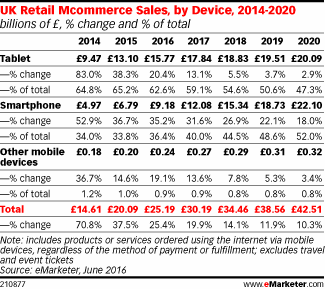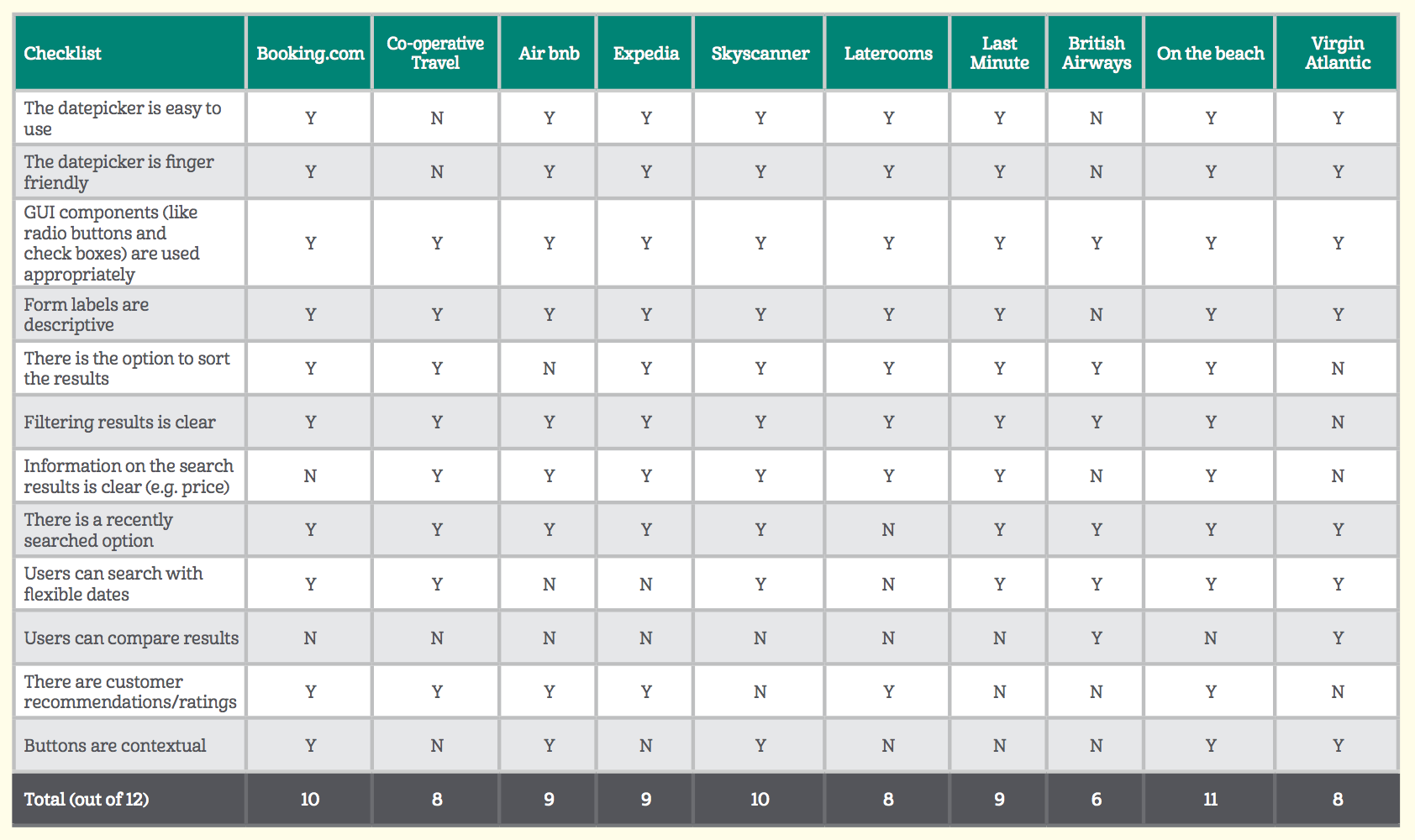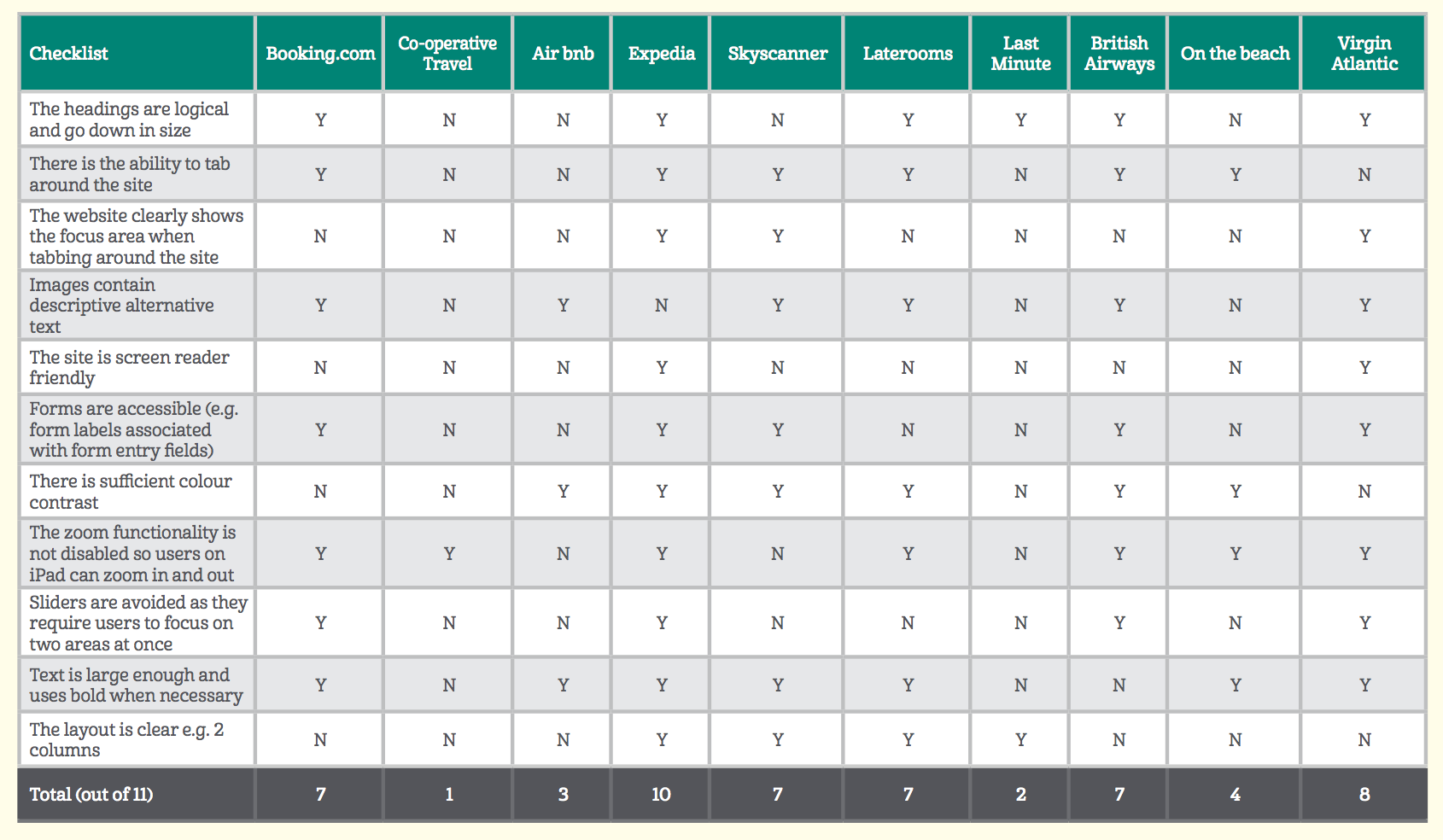mcommerce: Identity Fraud & Website Accessibility
by Rebecca Muir on 7th Jul 2016 in News


ExchangeWire Research’s weekly roundup brings you up-to-date research findings from around the world, with additional insight provided by Rebecca Muir, head of research and analysis, ExchangeWire. In this week’s edition: Smartphone shopping is driving UK retail ecommerce sales; Criminals target UK youth as identity fraud rises; and, Are online travel companies ignoring user experience and accessibility?
UK consumers favour smartphones
This year, UK mcommerce (mobile commerce) sales will account for USD$33.42bn (£25.2bn), according to new research by eMarketer.

The UK is a world leader, in terms of retail ecommerce’s share of total retail sales, and by 2020 more than one-in-five retail sales will be via ecommerce channels (22.6%).
The growing retail ecommerce market is helping to offset a decline in traditional retail sales in the UK. The total retail sector, which includes high-street shopping, suffered negative growth last year, but it is set to start rebounding in 2017, when it will grow by 0.9% to reach USD$536.70 bn (£404.75 bn).
UK consumers are easily making the shift to spending on mobile devices. UK retail mcommerce sales will continue to exhibit double-digit growth throughout the forecast period; and, by 2020, mcommerce sales are expected to exceed USD$56.36bn (£42.5bn).
The majority (62%) of mcommerce sales currently comes from tablet devices; however, smartphone shopping is fast gaining ground. By 2020, the balance will have tipped and it will account for 52.0%.
“Smartphone usage continues to have far-reaching implications for retailers in the UK”, said Bill Fisher, senior analyst at eMarketer. “However, more than simply driving digital retail traffic, these latest numbers show that smartphones are now increasingly driving digital sales. Getting the smartphone sales experience right is becoming more vital than ever.”
How safe is your personal data?
Yesterday (5 July), Cifas, a UK fraud prevention service, released new figures showing a 52%rise in young identity fraud victims in the UK. In 2015, just under 24,000 (23,959) people aged 30 and under were victims of identity fraud. This is up from 15,766 in 2014, and is more than double the 11,000 victims in this age bracket in 2010.
Fraudsters access their victim’s personal information (such as name, date of birth, address, mobile phone number, religion, and family information) in a variety of ways, including through hacking and data loss, as well as using social media to put the pieces of someone’s identity together.
People of all ages can be at risk of identity fraud, but with growing numbers of young people falling victim, Cifas is calling for better education around fraud and financial crime.
– Only 34% of 18-24 year olds say they learnt about online security when they were at school
– 50% of the 18-24 year olds surveyed believe they would never fall for an online scam (compared to the national average of 37%)
– Only 57% of 18-24 year olds report thinking about how secure their personal details are online (compared to 73% for the population as a whole)
This age group are also less likely to install anti-virus software on their mobile phone than the national average (27%, compared to 37%).
Simon Dukes, Cifas, chief executive said: “The likes of Facebook, Twitter, LinkedIn, and other online platforms are much more than just social media sites – they are now a hunting ground for identity thieves. We are urging people to check their privacy settings today and think twice about what they share. Social media is fantastic and the way we live our lives online gives us huge opportunities. Taking a few simple steps will help us to enjoy the benefits while reducing the risks. To a fraudster, the information we put online is a goldmine.”
Click here to watch a film 'Data to Go' by Cifas about identity protection. Filmed in a London coffee shop in March this year, the film uses hidden cameras to capture baffled reactions from people caught in a stunt where their personal data, all found on public websites, is revealed to them live on a coffee cup.
The UK spends £31bn on international tourism a year, the fourth-highest in the world after China, Germany, and the USA – according to the World Tourism Organisation. Furthermore, in the last two years, 89% of UK holidaymakers booked online, according to ABTA.
Accessibility is a necessity not an option
There are around two million people (1 in every 30) in the UK living with sight loss. It’s predicted that by 2020 this number will rise to over 2.25 million, and by 2050, almost double to nearly four million. An ageing population contributes heavily to these figures, with one-in-five people in the UK aged 75 or over living with sight loss.
Total digital inclusion is now required to ensure all members of society have the same experiences and are able to access the same services online. If companies fail to do this, they risk their brand, reputation, and, often, financial remunerations.
In first place for usability, accessibility, and ease of use across different devices was Skyscanner, scoring 28/35 points. In bottom position was Co-operative Travel, scoring just 17/35 points across these categories. The average score across the 10 websites was 23/35.
We identified some best practices for site designers from the report:
– Make sure the site is mobile-responsive and build an app if possible
– Ensure the booking/payment process feels secure
– The site should be screen-reader friendly, failing to do so means those living with sight loss may struggle to digest the content
– Do not switch off the zoom function, which is a crucial tool for users with visual impairments
– Images should be accompanited by alt text
– Consider users who use tabs to navigate the site, make sure key content is accesible using this navigation method
– Avoid white backgrounds on booking forms, this causes glare, which makes it difficult for some users to read
Full results from the report are shown below.
General Usability:




The full report can be downloaded here.
Ad FraudDataDigital MarketingDisplayIoTMobileProgrammaticSocial MediaTargetingViewability








Follow ExchangeWire